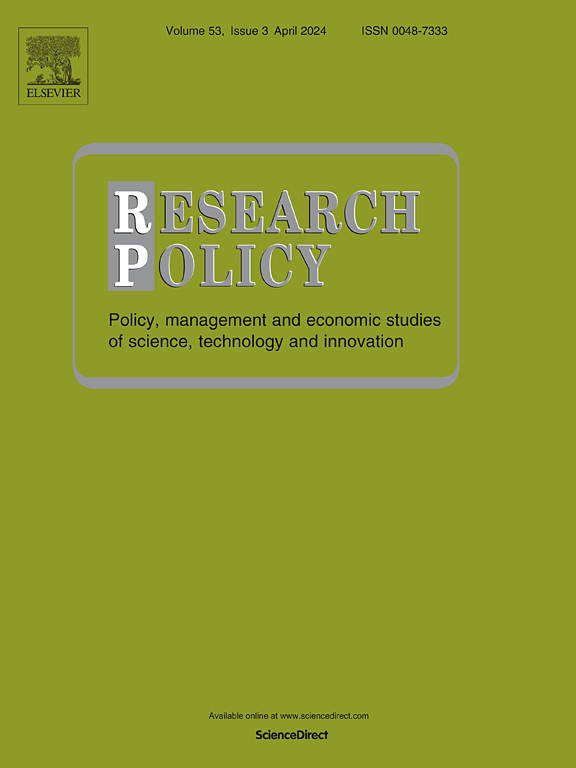投资众筹中的投资者类型和活动动态:羊群和集体行动视角
IF 8
1区 管理学
Q1 MANAGEMENT
引用次数: 0
摘要
随着投资众筹的兴起,数字化已经改变了风险融资领域,使其多样化和民主化。早期风险融资市场的特点是风险回报命题缺乏吸引力,信息高度不对称。通过众筹方式涌入的新投资者引发了人们对其投资决策质量的担忧。羊群效应和信息级联效应一直是投资众筹活动动态理论解释的核心。然而,这种解释忽略了早期企业产生的公共产品类型外部性的作用。基于早期企业产生双重外部性——知识溢出和可持续或社会影响——的假设,我们建议通过羊群和集体行动的视角来观察(群体)投资者的行为和活动动态。我们讨论羊群和集体行动如何解释投资类型、行为和投资众筹动态。为了理解公私融资动态,我们首先确定了四种投资者类型:理想主义者、变革推动者、寻求收益者和专业人士。这是通过结合和利用三个创新的早期企业众筹活动的多个数据集来完成的。使用平台交易数据,我们使用这些类型来预测投资者的行为并描述活动动态。利用羊群效应和集体行动理论,我们描述了三种影响不同类型投资者之间运动动态的机制:理性羊群效应、守门人效应和往复效应。我们认为,上述两种理论视角的结合提供了对投资众筹的高级理解,并为平台和监管机构提供了指导,以应对企业融资渠道与投资者保护之间的紧张关系。对于监管机构来说,我们的研究结果建议放弃“一项监管保护所有人”的做法,而是针对不同的投资者类型量身定制措施,以推进数字化和民主化的早期风险融资,同时考虑到私人和公共投资的回报。本文章由计算机程序翻译,如有差异,请以英文原文为准。
Investor types and campaign dynamics in investment crowdfunding: A herding and collective action perspective
Digitisation has transformed, diversified, and democratised the venture finance field with the rise of investment crowdfunding. Early venture finance markets are characterised by unattractive risk–return propositions and high information asymmetries. The inflow of new investors through crowdfunding has raised concerns regarding the quality of their investment decisions. Herding and information cascades have been at the core of the theoretical explanations of campaign dynamics in investment crowdfunding. However, this interpretation ignores the role of public-good-type externalities produced by early ventures. Based on the assumption that early ventures produce double externalities – knowledge spillovers and sustainable or social impact – we propose viewing (crowd) investor behaviour and campaign dynamics through a herding and a collective action lens. We discuss how herding and collective action can explain investment types, behaviour, and investment crowdfunding dynamics. To understand public–private funding dynamics, we first identified four investor types: idealists, change agents, gain seekers, and professionals. This was done by combining and exploiting multiple datasets of three innovative early ventures' crowdfunding campaigns. Using platform transaction data, we used these types to predict investors' behaviours and to describe campaign dynamics. Using herding and collective action theory, we describe three mechanisms that shape campaign dynamics between types of investors: rational herding, gatekeeping, and reciprocating. We argue that the combination of the two aforementioned theoretical lenses offers an advanced understanding of investment crowdfunding and provides guidance for platforms and regulators to navigate the tension between access to finance for ventures and investor protection. For regulators, our results suggest withdrawing from a ‘one regulation protects all’ approach and instead tailoring measures to different investor types in order to advance digital and democratised early venture finance, taking into account private and public returns on their investment.
求助全文
通过发布文献求助,成功后即可免费获取论文全文。
去求助
来源期刊

Research Policy
MANAGEMENT-
CiteScore
12.80
自引率
6.90%
发文量
182
期刊介绍:
Research Policy (RP) articles explore the interaction between innovation, technology, or research, and economic, social, political, and organizational processes, both empirically and theoretically. All RP papers are expected to provide insights with implications for policy or management.
Research Policy (RP) is a multidisciplinary journal focused on analyzing, understanding, and effectively addressing the challenges posed by innovation, technology, R&D, and science. This includes activities related to knowledge creation, diffusion, acquisition, and exploitation in the form of new or improved products, processes, or services, across economic, policy, management, organizational, and environmental dimensions.
 求助内容:
求助内容: 应助结果提醒方式:
应助结果提醒方式:


